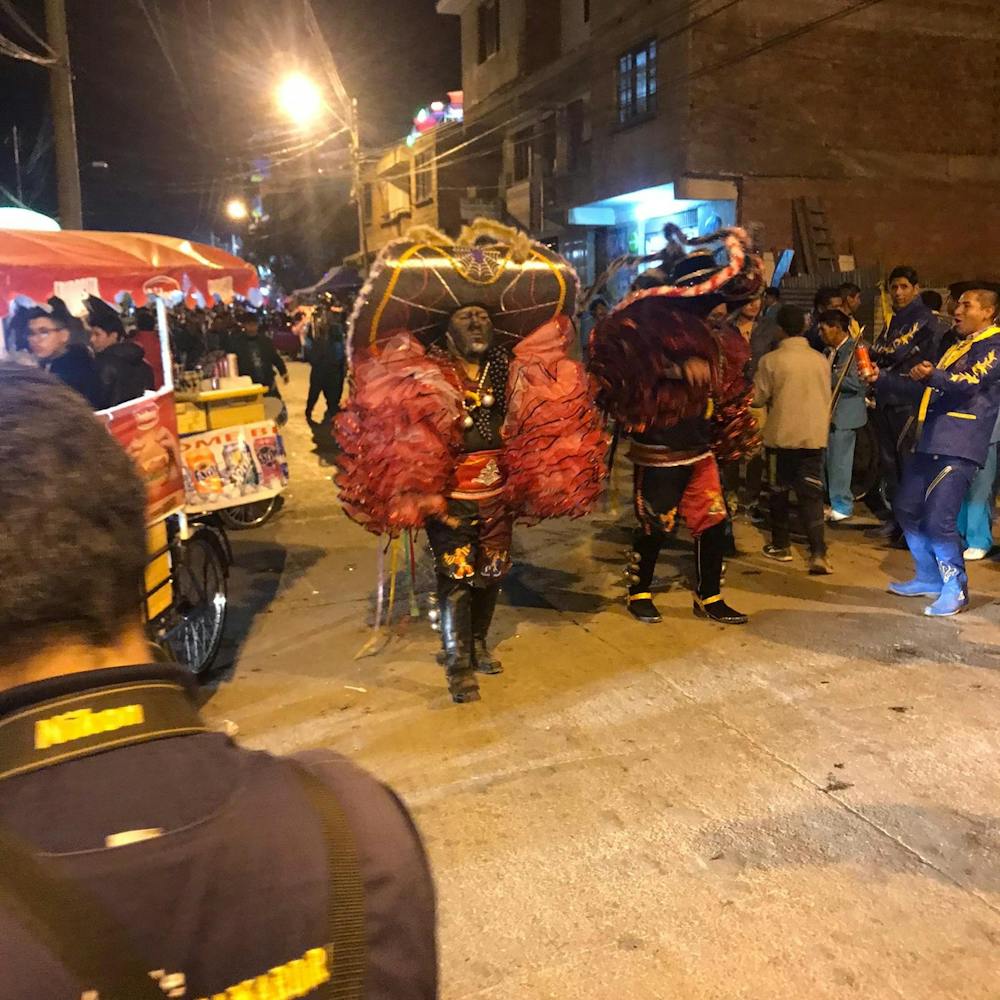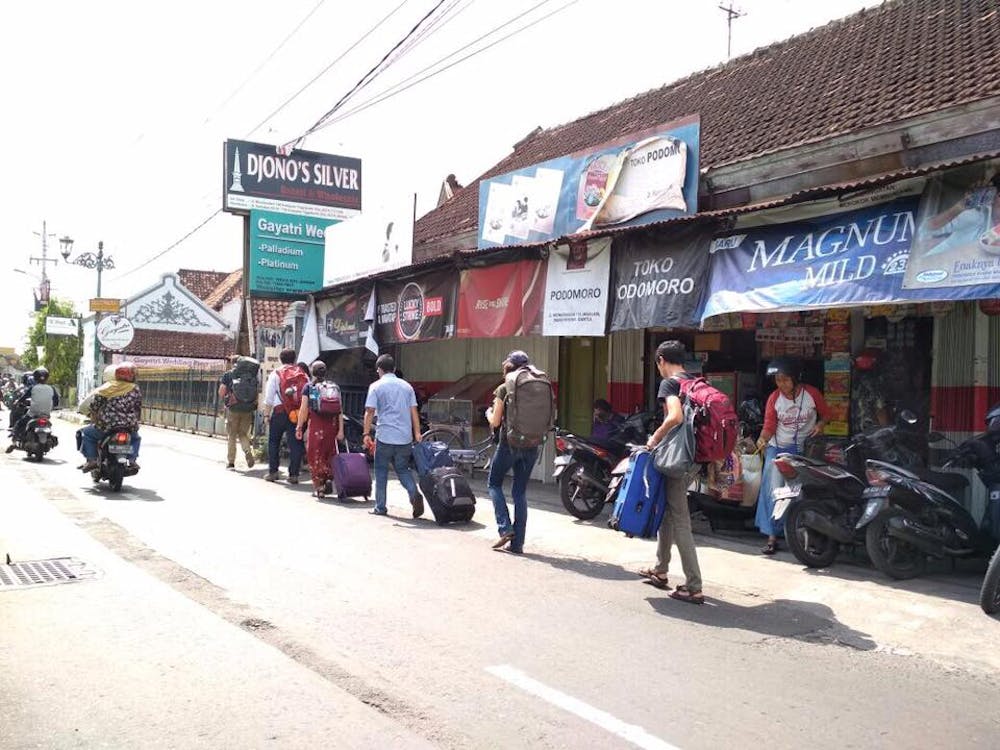“We are not here to fill an aesthetic. We deserve a formal apology of accountability after Bridge Year Director John Luria willingly sent numerous BIPOC on Bridge Year to be traumatized, after daring to be Black in severely anti-Black countries.”
This is what Kat Nix ’24, a Bridge Year Bolivia participant from the 2019–2020 cohort, told me, as she explained the circumstances that led her to leave her cohort in late December, about three months before the pandemic forced all students to return home.
This assertion should not come as a shock to the Bridge Year administration, which in recent years has repeatedly received reports of BIPOC students suffering mentally-scarring experiences. Until this year, they have failed to acknowledge these experiences, let alone taken actions to address them.
Now, as Luria described in a recent ‘Prince’ news article about discrimination participants faced abroad, the program is finally recognizing these experiences, and has pledged to rectify them.
But the question remains, why now? My conversations with Bridge Year alumni reveal the harsh reality that Bridge Year has not prioritized the well-being of students of color. And now, it appears the administration is only taking action because student concerns have become too loud to ignore.
Indeed, student voices have grown increasingly strong. In March, as a result of their experiences, a group of mostly BIPOC program alumni — Nix, Lauren Johnson ’21, Nicole Williams ’22, Reina Coulibaly ’23, Sharon Musa ’20, and Soy Park ’20 — presented Luria with a comprehensive document, which outlines more than twenty action items. These resolutions would significantly increase the Bridge Year program’s inclusivity.
They include calls for diversifying the Bridge Year administration, providing more information about race and gender relations in the student’s host country, facilitating conversations about race and identity during orientation, and developing a network of past BIPOC who participated in the Bridge Year program to whom students can reach out before committing to almost nine months abroad.
These students have stressed that such reforms should be made immediately, and consider many of them non-negotiable. Instead of acting on them, the University is employing yet another delay tactic.
As Deputy University Spokesperson Michael Hotchkiss explained in an email, the University has “engaged Rested Root Corp, an organization that provides racial and social justice education and consulting, to assist with [the University’s] ongoing diversity, equity, and inclusion planning efforts.” Rested Root will compile student experiences and provide Bridge Year with a confidential report, from which the administration will make an action plan by the end of this calendar year.
But the necessary plan of action is already before administrators — from the students themselves.
If the reforms suggested in the Bridge Year administration’s “action plan” do not incorporate the suggestions that students have already made, then the program should not continue. Without meaningful, student-informed change, Bridge Year will have failed to take accountability for past inaction when students endured racism.
The harmful experiences that students have faced on Bridge Year, as described in the paragraphs that follow, underscore the urgency of taking substantive action. When asked for comment, Hotchkiss said the University could not comment on “individual student experiences.”

Dani Samake ’24, a Bridge Year India participant from the 2019-2020 cohort, felt the program failed to take racism seriously, and that her onsite director misrepresented the extent of racism in India. When Samake asked the director about racism, she recalled being told, “it’s there, but it’s not too bad, so don’t worry about it.” Yet, Samake said she experienced severe racism in the country.
Furthermore, students have been deterred from sharing their experiences publicly. Coulibaly, a 2018 Bridge Year China alum, said their onsite director questioned their decision to write about their experiences of racism for a required blog post, for fear “it would drive a wedge amongst group members.” This accusatory response pressured Coulibaly not to publish the post.
Likewise, Nix published a blog post on Bridge Year’s website, in which she detailed her experiences of racism in Bolivia. Shortly after posting her reflection on Instagram, Bridge Year disabled its Instagram account. Luria later contacted Nix via email, saying an “uncertainty” about whether she had consented to the post’s publication prompted its removal.
Eventually, Nix’s account was reposted. Nix claimed, however, that the account flooded Instagram’s algorithm with other posts, hindering followers from interacting with the post.
Upon looking into Bridge Year’s Instagram account, I found that it was not uncommon for the account to post two times over a two-day period, but quite uncommon for the account to post twice on the same day. I only noticed two other occurrences of such frequent publication.
Yet, when Kat’s post was published on Nov. 21, not only did the account make another post on the same day, but posts appeared over the three days that followed, making four consecutive posts.

A group at the Festival de San Miguel in Tiquipaya, Bolivia wearing blackface. Nix’s blog post reflecting on this instance of racism was initially taken down.
The administration’s professed confusion, or “uncertainty,” as to why someone would want to describe their experiences with racism suggests that their efforts to question, suppress, and silence BIPOC students stems not just from a desire to portray the program as exclusively positive, but also from a lack of understanding of what it means to be Black in a post-colonialist world.
In response to student questions about the extent of racism in China and India, Samake said that Luria claimed not to know. Isn’t that something one would expect the director of a program to know, before downplaying the racist tendencies of a society and sending Black students abroad?
These experiences tell a story of how BIPOC students have borne the brunt of their leaders’ ignorance. They have faced pressure to depict Bridge Year as a rewarding and exclusively positive program, contradictory to their true experiences.
Now, students are taking a stand. They are forcing the administration to view them as not just a fulfillment of their diversity quota for an aesthetically pleasing Instagram feed, but as full human beings, whose experiences must be heard.
These students have been courageous in demanding change from an administration that has clearly been resistant in the past. Now the administration has an opportunity to match their courage by effecting these demands. If the administration continues to ignore these already proposed reforms, then the program must be disbanded.
Or should we wait? Should we wait until more Black students are spit on in the streets or run off the road while merely riding to work? Should we wait until more Black women are referred to by fellow members of their cohorts as ‘bitches’ and ‘sluts’, and told that if they want the racism they are facing to end then they should use ‘Fair and Lovely’, a classic skin lightening cream? This is what Samake experienced in India.
Should we wait until more Black students are hospitalized with stress-related illnesses only to be told by white instructors that it was all in her head? This is what Nix experienced in Bolivia.
If the Bridge Year administration will not draw the line at these experiences, then when will they consider enough to be enough?
When I asked Nix and Samake whether they thought Rested Root would be effective, Nix first expressed frustration that such a step had taken this long. She said she would liked to see “more action before BIPOC [were] subjected to constant trauma.”
Nix said she felt the administration was doing the bare minimum to address student concerns, even as students had already done the work of making impactful change through their demands. To her, the partnership with Rested Root satisfies only one of the action items the administration was presented with—a request for external review of the program. She also expressed concerns that Rested Root seems designed to address trauma only after BIPOC have already been subject to it. Samake concurred with this sentiment.
Samake and Nix’s frustration creates a clear portrayal of the despicable reality that BIPOC, queer, FLI and other marginalized groups at this institution face. They have had to place their trauma on display before the University acts, often insufficiently, and often, it appears, out of fear of being condemned for their harmful inaction.
Without students, there would be no Princeton. BIPOC students are not begging this administration for any right to be here; Princeton needs us — all students, regardless of political beliefs, racial identity, sexual orientation, ethnic background, gender identity and ability — to survive. Nassau Hall best start acting like it, and if the administration ever becomes so brazen as to suggest otherwise, then it has contravened its latest ‘commitment’ to anti-racism.
While we continue to demand for the right to exist in a space that we and students before us have built, this anti-democratic institution needs to at least pretend to care about its students.
Truly, it comes as no surprise that Bridge Year countenances racism. If history has taught us anything, there is no doubt that when a program, which feeds students propaganda about “transformative global service learning experiences,” as stated on Bridge Year’s website, reinforces a white savior complex, Black bodies are bound to be viewed as sacrifices. This is not because Black bodies have any less worth, but rather because we exist in a post-colonialist society established on racist and racialized divisions.
When the Bridge Year program sends recently graduated high school seniors, most of whom are unskilled workers, to countries they know little to nothing about, who benefits from such a program? The answer is those students, most of whom are white, who have grown up in sheltered, homogeneous socioeconomic bubbles.
For them, living in a country with a different culture, where the socioeconomic status varies drastically from that of their hometowns, offers a rewarding experience and indeed a needed one, given that these students will eventually be sharing physical as well as academic spaces with people of diverse backgrounds on campus.
But what about the others involved? In order to create a program that respect sthe humanity of all of its participants and of the people it purports to serve, the administration must interrogate its goals. Until BIPOC Bridge Year students receive adequate resources and the program does not use local residents as a means to an end for white, sheltered students, then the program will only serve to perpetuate colonialist narratives and leave students of color vulnerable to traumatic experiences.
Kristal Grant is a first-year from Kingston, Jamaica. She can be reached at khgrant@princeton.edu.








